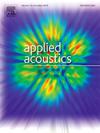Research on feature extraction of underwater acoustic signal based on hybrid entropy algorithms
IF 3.4
2区 物理与天体物理
Q1 ACOUSTICS
引用次数: 0
Abstract
The research on feature extraction of underwater acoustic signal (UAS) is of great significance in developing and protecting marine resources. Therefore, to effectively improve the feature extraction technology, a novel hybrid entropy feature extraction method based on enhanced singular spectrum decomposition (ZSSD), generalized phase-amplitude-aware permutation entropy and fractional singular value entropy (GAAPE&FSVE) is proposed. To better capture the dynamic fluctuation components in the UAS, an enhanced SSD algorithm based on the modified Cao algorithm and ensemble fluctuation-based dispersion entropy is proposed. To make AAPE better adapted to feature extraction of UAS, phase processing and entropy parameters transformation are introduced, and GAAPE is proposed. To solve the problem that the entropy value of SVE is unstable when the quantized signal changes dynamically, a new fractional-order processing is introduced, and FSVE is proposed. Firstly, UAS is decomposed into a series of singular spectrum components (SSCs) by ZSSD. Secondly, the useful information contained in SSC is calculated from the time and frequency domains, respectively. The best two SSCs are reconstructed as feature vectors. Then, 150 samples are randomly selected from the feature vectors, and the GAAPE and FSVE of each sample are calculated, respectively. Finally, compared with at least 15 other methods, the experimental results show that the proposed method exhibits stronger synergy in UAS feature extraction and outperforms all compared methods with a 99% recognition rate.
基于混合熵算法的水声信号特征提取研究
水声信号特征提取的研究对开发和保护海洋资源具有重要意义。为此,为了有效改进特征提取技术,提出了一种基于增强奇异谱分解(ZSSD)、广义相幅感知置换熵和分数阶奇异值熵(gaape&fsve)的混合熵特征提取方法。为了更好地捕捉无人机系统中的动态波动分量,提出了一种基于改进的Cao算法和基于集成波动的色散熵的增强SSD算法。为了使GAAPE更好地适应无人机的特征提取,引入了相位处理和熵参数变换,提出了GAAPE。为解决量化后信号动态变化时SVE的熵值不稳定的问题,引入了一种新的分数阶处理,提出了FSVE。首先,利用ZSSD将UAS分解为一系列奇异谱分量(ssc);其次,分别从时域和频域计算SSC中包含的有用信息。将最佳的两个ssc重构为特征向量。然后,从特征向量中随机抽取150个样本,分别计算每个样本的GAAPE和FSVE。最后,与其他至少15种方法相比,实验结果表明,该方法在UAS特征提取中具有更强的协同作用,识别率达到99%,优于所有比较方法。
本文章由计算机程序翻译,如有差异,请以英文原文为准。
求助全文
约1分钟内获得全文
求助全文
来源期刊

Applied Acoustics
物理-声学
CiteScore
7.40
自引率
11.80%
发文量
618
审稿时长
7.5 months
期刊介绍:
Since its launch in 1968, Applied Acoustics has been publishing high quality research papers providing state-of-the-art coverage of research findings for engineers and scientists involved in applications of acoustics in the widest sense.
Applied Acoustics looks not only at recent developments in the understanding of acoustics but also at ways of exploiting that understanding. The Journal aims to encourage the exchange of practical experience through publication and in so doing creates a fund of technological information that can be used for solving related problems. The presentation of information in graphical or tabular form is especially encouraged. If a report of a mathematical development is a necessary part of a paper it is important to ensure that it is there only as an integral part of a practical solution to a problem and is supported by data. Applied Acoustics encourages the exchange of practical experience in the following ways: • Complete Papers • Short Technical Notes • Review Articles; and thereby provides a wealth of technological information that can be used to solve related problems.
Manuscripts that address all fields of applications of acoustics ranging from medicine and NDT to the environment and buildings are welcome.
 求助内容:
求助内容: 应助结果提醒方式:
应助结果提醒方式:


